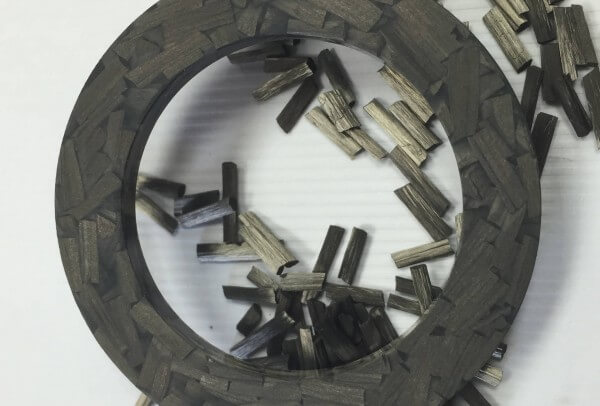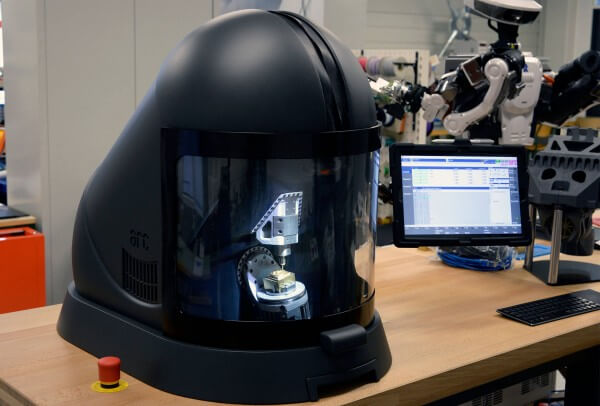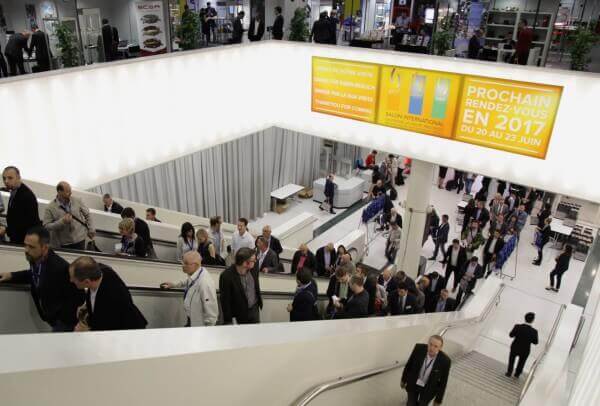“An atmosphere that encourages innovation” is how the organisers of the EPHJ-EPMT-SMT trade show, which ran June 14th to 17th at Palexpo Geneva, described the mood… one way of putting a positive spin on an otherwise tense situation, given the difficulties suppliers to the watch industry have been facing in recent months, and an accurate description of how the land lies: as order books sit empty, only companies that are able to propose novel – oh, and more competitive – solutions can hope to weather the storm. A race for innovation which, despite some slow starters, hasn’t escaped the 881 exhibitors at Switzerland’s biggest industrial fair.
There's no point to even the smartest idea if it doesn't bring prices down.
New materials
The subject was doing the rounds throughout the four days, and not just in private conversations. Picking up on industry concerns, a full programme of round tables and talks on the future of the sector was organised. Topics under discussion included “Will Swiss watchmaking adapt?”, “The new dimension of laser applications”, and the results of a survey of 16- to 25 year-olds and their attitudes towards watches. The real answers, however, were to be found by trawling the aisles of the fair.

Take the example of the nickel-coated carbon on show at Composites Busch. The company, which is based in Porrentruy (Jura), is a specialist in composite materials with its own R&D division. It developed the Big Bang Broderie for Hublot, winner of the Lady’s Watch prize at the GPHG 2015. But this is already ancient history for vice president Alain Lallemand: “It’s not enough to come up with new solutions. They have to be plug and play,” he declares. The next stage, after carbon external parts, will be carbon movement components, in particular a carbon mainplate. Several prototypes were on show at EPHJ. The most promising product, however, is the nickel-coated carbon fibre, in crystal form on the Composites Busch stand. “The fibres are pre-impregnated with nickel,” Lallemand explains. “They are anti-magnetic. One of their main uses is to protect cardiac devices but they have enormous potential in watchmaking, particularly for manufacturing cases.” Barely four hours into the fair and already a number of visitors had shown a marked interest.
There's no point to even the smartest idea if it doesn't bring prices down.
More competitive
Alongside added value, competitiveness is another equally important aspect of innovation. “There’s no point to even the smartest idea if it doesn’t bring prices down,” notes André Saunier. And the boss of AJS Production knows what he’s talking about. His company, also based in Porrentruy, took away the EPHJ 2016 Grand Prix des Exposants for Modularium. An additional plate that proposes a choice of seven complications including GMT, date and regulator, this modular system adapts centrally on the movement. It opens up multiple possibilities for dial layout, and therefore design options, at a reasonable price. “One of the reasons we’re competitive,” says Saunier, “is that we’ve invested in machinery, and have added lasers, automatic lathes and milling machines to our fleet.”

Production methods are certainly where the biggest changes will be seen over the next few years, and Haute Ecole Arc Ingénierie, an engineering school, is already making its mark. Whereas CNC machines are currently the size of a car and weigh over a ton, the school has developed a five-axis micromachine that’s not much bigger than a coffee-maker. Unveiled on April 21st, another advantage of the Micro5 is that it uses ten times less energy without any loss of precision.
This little marvel could well revolutionise production in the not so distant future. Faster, at any rate, than additive manufacturing. Better known as 3D printing, it seems to have come up against a form of passive resistance and, despite being trumpeted as the technology of the future, serves mainly for the production of prototypes. “You can do a lot of things with additive manufacturing,” says Dominique Beuchat, CEO of 3D Precision in Delémont (Jura). “We just need designers and engineers to adapt! Most of the people who come to us want parts that are made by subtracting rather than adding material. I don’t see the point. If a part has been designed to be milled and ground, then it should be milled and ground. 3D implies a completely new paradigm. If we are to make components that can’t be made any other way, and using a minimum amount of material, then we have to think differently!”
















